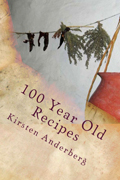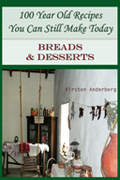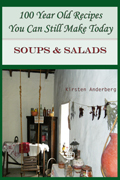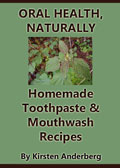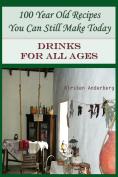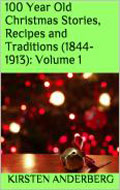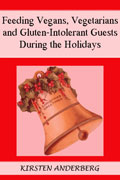Welcome to Kirsten's Day of the Dead/Halloween Page!
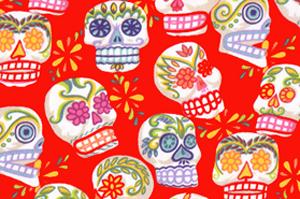
Kurt Vonnegut, Jr. writes: "God made mud. God got lonesome. So God said to some of the mud, "Sit up!" "See all I've made," said God, "the hills, the sea, the sky, the stars." And I was some of the mud that got to sit up and look around. Lucky me, lucky mud. I, mud, sat up and saw what a nice job God had done. Nice going, God. Nobody but you could have done it, God! I certainly couldn't have. I feel very unimportant compared to You. The only way I can feel the least bit important is to think of all the mud that didn't even get to sit up and look around. I got so much, and most mud got so little. Thank you for the honor! Now mud lies down again and goes to sleep. What memories for mud to have! What interesting other kinds of sitting-up mud I met! I loved everything I saw! Good night." - The Last Rites of the Bokononist faith (from "Cat's Cradle")
The Day of the Dead season (Oct. 31- Nov. 2) is dedicated to souls that have passed onto the "other side." The celebrations begin the last days of October, with ritual cleaning of gravesites and the building of altars to the Dead. Bright yellow and orange calendula flowers decorate cemetery plots and altars, special foods with death themes are made, and a general celebration ensues *with* the Dead from Oct. 31 to Nov. 2. The Day of the Dead has Mexican origins and families throughout Mexico gather, throwing parties with loud music and food, around relatives' and loved ones' graves, sometimes all night long, between Oct. 31 and Nov. 2. Pagans also say the souls of the Dead are closest to the world of the living during this period and pagans have similar celebrations this time of year. I think some of the associations of death with this time of year come from the fact that this is the end of the harvest season, and many plants begin to die during this period, culminating in a serious lack of plants, and animals, for food during the heart of winter. It is the time period when the abundance of summer must be tempered with the coming winter or else death can be threatening. Candles in windows light the way for souls to visit, as altars set out with pictures and favorite foods of the deceased attract loved ones' souls toward the living.

Lo que en el capillo se toma con las martaja se de ja.
~What is learned as a child remains throughout life.~
(Learn how to make a Day of the Dead Altered Book!)
Traditional foods for the Day of the Dead season include sugar skulls and bread of the Dead. I have made a Day of
the Dead Food Page with some recipes and links on it. Traditional sugar skulls for the holiday are primarily made of sugar and meringue in skull molds. The skulls
are then dried and painted brightly with food coloring and set on altars. You can find sugar skull recipes online that use
meringue powder and those that use egg whites. You can also buy a variety of
sugar skull
molds (which can also be used to mold chocolate skulls) online. Another traditional food is bread of the dead (or pan de muertos). These breads are
shaped into skeletons, bones, skulls, etc. and are often decorated with red food coloring to simulate blood. Day of the Dead cookies are likewise often decorated with red
colored sugar and icing. You can find many pan de muertos recipes online,
as well as Bones of the Dead cookie recipes.
I have a Master's Degree in History and Archiving and have spent some time researching 100 year old (and older) recipes. One of my books is full of
100 year old CANDY recipes. It is really fun to make your own candy from wholesome ingredients around Halloween and the Day of the Dead. You can find my book of 100 Year old candy recipes,
The Day of the Dead is a nice way to commune with those you love who have passed on. I collect pictures of people I love who have passed on, and put their pictures up on an
altar to the Dead in my home every year. I also place some sugar skulls, pan de muertos, and some of the favorite foods of my deceased friends, along with trinkets they gave me,
or things that remind me of them on the altar. I decorate the altar with bright yellow and orange marigold (calendula) flowers that I picked and dried the spring/summer prior, but you
can also make paper marigolds out of brightly colored paper. There are instructions on the internet
to help you make
your own Day of the Dead home altar. On the eve of the Day of the Dead, Oct. 31, I light candles on the altar and also in my windows
to help guide the spirits to my altar and home. During this time, I also do things to honor the Dead, such as performing their favorite song, or donating time to their favorite
political cause, or even writing an article about their life and legacy, posting it to the web and
sending it to their friends and family.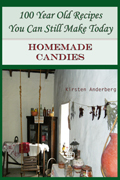 , for sale on Amazon at
www.amazon.com/Year-Recipes-Still-Today-ebook/dp/B008MAZZ4Q. This book contains home-made candy recipes
which are 100 or more years old, but can still be made today. The recipes date from 1885-1908, and include recipes from the author's great-grandmother in addition to archival recipes from
books and newspapers. Includes candy history, trivia and cooking tips with regards to candy throughout the book. Unusual recipe details include things like the recommendations of melting grated chocolate for dipping over a teakettle, dipping nuts into chocolate with a thin knitting needle and testing candy on snow. Discussion of the lack of modern refrigeration during this time period is also included. These recipes hark of an older day, but read like a health food cookbook nowadays, due to the lack of artificial ingredients and use of wholesome, pure foods to make old-fashioned candy. “For homemade candies, use pure materials and good fruit. Enough of earths and starch and decayed fruits are bought in the cheap candies of the stores.” – The Housewife’s Library, 1885. This book includes 85 candy recipes, including Butterscotch Candies, Lemon Drops, Horehound Candy, Everton Taffy, Christmas Bonbons, Fondant, Cream Candies, Coconut Creams, Maple Creams, Chocolate Creams, Fruit Creams, Maple Fudge, Chocolate Fudge, Brown Sugar Fudge aka Pinoche, Vanilla Caramels, Maple Caramels, Coffee Caramels, Chocolate Caramels, Ginger Candy, Honey Candy, Molasses Candy, Peppermints, Candy Canes, Lemon Taffy, Butter Taffy, Peanut Brittle, Almond Candy, Candied Nuts, Southern Pralines, Popcorn Balls, Candied Fruits, Orange Sticks, Orange Caramels, Crystalized Fruits, Stuffed Dates, Date/Fig Candy, Orange Chips and Crystalized Grapes.
, for sale on Amazon at
www.amazon.com/Year-Recipes-Still-Today-ebook/dp/B008MAZZ4Q. This book contains home-made candy recipes
which are 100 or more years old, but can still be made today. The recipes date from 1885-1908, and include recipes from the author's great-grandmother in addition to archival recipes from
books and newspapers. Includes candy history, trivia and cooking tips with regards to candy throughout the book. Unusual recipe details include things like the recommendations of melting grated chocolate for dipping over a teakettle, dipping nuts into chocolate with a thin knitting needle and testing candy on snow. Discussion of the lack of modern refrigeration during this time period is also included. These recipes hark of an older day, but read like a health food cookbook nowadays, due to the lack of artificial ingredients and use of wholesome, pure foods to make old-fashioned candy. “For homemade candies, use pure materials and good fruit. Enough of earths and starch and decayed fruits are bought in the cheap candies of the stores.” – The Housewife’s Library, 1885. This book includes 85 candy recipes, including Butterscotch Candies, Lemon Drops, Horehound Candy, Everton Taffy, Christmas Bonbons, Fondant, Cream Candies, Coconut Creams, Maple Creams, Chocolate Creams, Fruit Creams, Maple Fudge, Chocolate Fudge, Brown Sugar Fudge aka Pinoche, Vanilla Caramels, Maple Caramels, Coffee Caramels, Chocolate Caramels, Ginger Candy, Honey Candy, Molasses Candy, Peppermints, Candy Canes, Lemon Taffy, Butter Taffy, Peanut Brittle, Almond Candy, Candied Nuts, Southern Pralines, Popcorn Balls, Candied Fruits, Orange Sticks, Orange Caramels, Crystalized Fruits, Stuffed Dates, Date/Fig Candy, Orange Chips and Crystalized Grapes.

Print out your own Day of the Dead Flash Cards!
Death is a part of life and this celebration is a good time to familiarize children with the concept of death. It is also a good time to demystify death, and to educate
children about life and death cycles in a positive, even celebratory, setting. Many resources are available online to guide teachers and parents during this time, including a free
skeleton puppet template.
In many regions of Mexico, November 1st honors deceased children and
infants, whereas deceased adults are honored on November 2nd.
The issue of death is embedded in classic literature, art, and music since time unknown. Shakespeare's graveyard scene in Hamlet is a classic multi-layered examination of death. Not only does that scene discuss how noblemen and beggar all end the same in the earth in death, but the scene also ponders serious philosophical dilemmas around the meaning of life, while reflecting upon death, that have haunted man forever, it seems. The classic "Ring around the rosy" song, with pockets full of posies which were supposed to keep the plague away, ends with "ashes, ashes, we all fall down," referring to death of children in nursery rhyme form. In "Cat's Cradle," Kurt Vonnegut writes ""God made mud. God got lonesome. So God said to some of the mud, "Sit up!" "See all I've made," said God, "the hills, the sea, the sky, the stars." And I was some of the mud that got to sit up and look around. Lucky me, lucky mud. I, mud, sat up and saw what a nice job God had done. Nice going, God. Nobody but you could have done it, God! I certainly couldn't have. I feel very unimportant compared to You. The only way I can feel the least bit important is to think of all the mud that didn't even get to sit up and look around. I got so much, and most mud got so little. Thank you for the honor! Now mud lies down again and goes to sleep. What memories for mud to have! What interesting other kinds of sitting-up mud I met! I loved everything I saw! Good night." (The Last Rites of the Bokononist faith). The topic of death need not be frightening nor taboo. One can incorporate the thoughts of great thinkers and the arts and traditions of the past into the discussion. As it is with much of nature, death can be seen as a power to be in awe of, rather than a force to fear. The Day of the Dead is a good way to change your relationship with death. Teachers (and parents) can download free educational Day of the Dead
activity packets at http://www.azcentral.com/ent/dead/teachers/. The packet includes coloring pages, a word search game, a mix and match puzzle, a lesson plan,
a Calavera mask project and a skeleton puppet. Enchanted Learning's Day of the Dead webpage at http://www.enchantedlearning.com/crafts/dayofthedead, offers several
free templates for Day of the Dead crafts for kids, such as pasta skeletons, balloon ghosts, ghost puzzles and games and information about Mexico. Ladislao Loera's Dia de los Muertos Page
is a beautiful site with pictures, altars, lesson plans, and more.
Teachers (and parents) can download free educational Day of the Dead
activity packets at http://www.azcentral.com/ent/dead/teachers/. The packet includes coloring pages, a word search game, a mix and match puzzle, a lesson plan,
a Calavera mask project and a skeleton puppet. Enchanted Learning's Day of the Dead webpage at http://www.enchantedlearning.com/crafts/dayofthedead, offers several
free templates for Day of the Dead crafts for kids, such as pasta skeletons, balloon ghosts, ghost puzzles and games and information about Mexico. Ladislao Loera's Dia de los Muertos Page
is a beautiful site with pictures, altars, lesson plans, and more.

Drawing by Jose Guadalupe Posada
Jose Guadalupe Posada is the most well-known artist associated with Day of the Dead art. He has drawn classic skeletons
doing all kinds of things in his work. Small handmade skeleton dolls (papier mache calaveras) in diorama scenes portraying the Dead in their professions, doing hobbies or
sports they enjoyed, or just doing daily activities are common too. Arts and crafts are used for decorations in the home, cemetery and public spaces and are ways for people to
come together communally to honor the Dead.
As the Day of the Dead approaches, you may want to pull out some pictures of loved ones who have died and to post them for all to see in your home, telling their
stories to your children and family, keeping their legacies alive. You may want to make some Day of the Dead arts and crafts and/or foods to celebrate with your
deceased and living friends. Or you may just want to set some quiet alone time aside to communicate with someone you have loved and lost touch with after they left their body.
"If I don't meet you no more in this world,
DAY OF THE DEAD RESOURCES
I'll meet you in the next one,
So don't be late!" - Jimi Hendrix
Day of the Dead Arts and Crafts
Burke Museum: Make Your Own Skeleton Puppet
Burke Museum: Make a Paper Marigold
Make Your Own Papel Picado (cut paper banners)!
Make Paper Flowers
Day of the Dead Altered Books
Day of the Dead Flashcards
Day of the Dead Games for Kids
Day of the Dead Teacher/Student Activities
Make a Day of the Dead Puppet
Bread of the Dead, Cookies for Day of the Dead Activities
Pan de Muerto Recipe
Pan de Muertos (Bread of the Dead) recipe
Pan de Muertos (Bread) Recipe
Make Bones of the Dead Cookies
Day of the Dead Cookie Recipe
Sugar Skulls Recipes and Supplies
Make Your Own Sugar Skull Candy
How to Make Sugar Skulls
Make Sugar Skulls
Sugar Skull Candy Recipe
Sugar and Chocolate Skull Candy Molds
Other Day of the Dead Foods
Pumpkin Candy Traditional Recipe
General Day of the Dead Information
Inside Mexico - Articles on everything from a Day of the Dead glossary, to teacher activities, recipes,
crafts, and more
Ladislao Loera's Dia de los Muertos Page - A beautiful site with pictures, altars, lesson plans, and more
National Geographic article on the Day of the Dead
Arizona Central's Day of the Dead Page - Includes history, events, arts and crafts, food recipes, altars, lesson plans, and more - in English and Spanish!
Day of the Dead Glossary
Day of the Dead Proverbs
Day of the Dead Links
Day of the Dead Altars/Folk Art
Make Your Own Day of the Dead Altar
Altars and Offerings
Day of the Dead Folk Art Gallery
Skeleton Folk Art
 Kirsten Anderberg. All rights reserved. For permission to reprint/publish, please contact Kirsten at kirstena@resist.ca.
Kirsten Anderberg. All rights reserved. For permission to reprint/publish, please contact Kirsten at kirstena@resist.ca.Thank you to Resist.ca for hosting this website!

